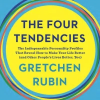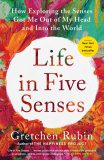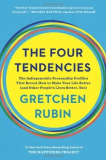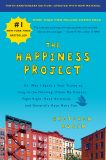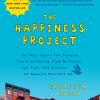It’s holiday time, and that means waiting in line: at the grocery store, at the airport, at shops, everywhere. I’m an impatient person, and standing in a slow-moving line is one of those very small, maddening aspects of life that drives me crazy. As often happens, however, when I learned more about the experience, it became more interesting to me.
Fun fact from the Wall Street Journal story on Find the best checkout line: you’re better off waiting in a single-file line than in one of several lines for different cashiers; although people prefer individual lines, a single-file line moves about three times faster.
I also read a paper by David Maister, The Psychology of Waiting Lines. The piece is aimed at people who operate stores, restaurants, doctors’ offices, and other places where people fuss about being kept waiting. Of course, most of us are the ones standing in line, not the ones controlling the line, but I was fascinated by getting this insight into my own psychology.
Maister’s main point is that the actual time we’re waiting may have little relationship to how long that wait feels. Two minutes can pass in a flash, or two minutes can feel interminable. Here are eight factors that make waits seem longer:
1. Unoccupied time feels longer than occupied time. When you have something to distract yourself, time passes more quickly. Some hotels put mirrors by the elevators, because people like to look at themselves.
2. People want to get started. This is why restaurants give you a menu while you wait, and why doctors put you in the examination room twenty-five minutes before your examination actually begins.
3. Anxiety makes waits seem longer. If you think you’ve chosen the slowest line, or you’re worried about getting a seat on the plane, the wait will seem longer.
4. Uncertain waits are longer than known, finite waits. People wait more calmly when they’re told, “The doctor will see you in thirty minutes” than when they’re told, “The doctor will see you soon.” Maister gives an amusing illustration of a phenomenon that I’d noticed in my own life: if I arrive someplace thirty minutes early, I wait with perfect patience, but three minutes after my appointment time passes, I start to feel annoyed. “Just how long am I going to have to wait?” I fume.
5. Unexplained waits are longer than explained waits. We wait more patiently for the pizza guy when there’s a thunderstorm than when the sky is clear. We wait more patiently on the plane when we know that there’s another plane at the gate. I remember being very annoyed as I waited for a doctor, until a nurse explained, “A woman who’s pregnant with triplets is having trouble breathing.” When I understood the reason for the delay, I lost my impatience.
6. Unfair waits are longer than equitable waits. People want their waits to be fair. I get anxious, for instance, when I’m waiting on a crowded subway platform, when there’s no clear, fair way to determine who gets on the next car. The “FIFO” rule (first in, first out) is a great rule, when it works. But sometimes certain people need attention more urgently, or certain people are more valuable customers. Then it gets trickier. Often, when people are treated out of sequence, it’s helpful to have them be served elsewhere—e.g., people giving customer service by phone shouldn’t be in the same room as people giving service in person.
7. The more valuable the service, the longer the customer will wait. You’ll wait longer to talk to your professor than to talk to a sales clerk. You’ll stand in line longer to buy an iPad than to buy a toothbrush.
8. Solo waits feel longer than group waits. The more people engage with each other, the less they notice the wait time. In fact, in some situations, waiting in line is part of the experience. I remember waiting in line with my daughter and some friends to buy Harry Potter and the Deathly Hallows at the midnight release. It was quite a scene.
Since I’ve read this paper, I’ve been far more patient about standing in line. I’m occupied (see #1) with thoughts analyzing my own experience of waiting in line! Have you found any good ways to make waiting in line more pleasant? One thing I do is to practice “waiting in line meditation.” Just saying that phrase makes me feel very high-minded and wise. Do you think that the rise of the smart phone has helped people wait in line more patiently?
From 2006 through 2014, as she wrote The Happiness Project and Happier at Home, Gretchen chronicled her thoughts, observations, and discoveries on The Happiness Project Blog.

